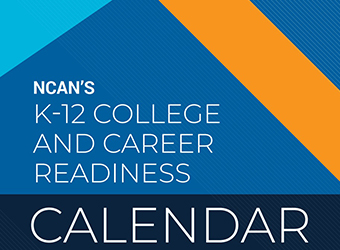 Over the past two academic years, the National College Attainment Network (NCAN) has been working with 20 school districts and partner organizations nationwide via the To and Through Advising Challenge to examine their postsecondary advising practices and implement changes.
Over the past two academic years, the National College Attainment Network (NCAN) has been working with 20 school districts and partner organizations nationwide via the To and Through Advising Challenge to examine their postsecondary advising practices and implement changes.
“One of the biggest obstacles is that there’s so much to do in the college and career readiness cycle, so many milestones,” said Bill DeBaun, NCAN’s director of data and evaluation. “So we thought, ‘What if there was some kind of resource where you could keep track of what you’re supposed to be doing at any given moment to keep students on track?’”
To address that potential barrier, NCAN recently unveiled its new, 15-month K-12 College and Career Readiness Calendar highlighting and tracking major activities and offering the best resources for implementing them.
“Connecting the dates with the resources is really valuable,” said DeBaun, who added that each activity has a maximum of five suggested resources. “It’s not enough for you to know when you’re going to be doing these things, we also want to make it a one-stop shop so you don’t also have to search too much for how to do them.”
Additionally, the calendar provides a category into which each activity falls (categories include “Partnerships,” “Financial Aid/FAFSA”, “Summer Melt”), and notes whether practitioners should be planning or taking action in a given month related to that activity.
“Summer melt activities, for example, should start way before May, June, or July,” DeBaun noted. “So schools really need to be thinking about what their summer melt is going to look like in January and February, but that is not necessarily going to be top of mind. Our hope is that the calendar can help keep these things aligned.”
The introductory text for the calendar indicates it is “best utilized by a cross-functional college and career readiness team that engages district and school leadership, school counselors, teachers, parents, students, and, where possible, external groups like community-based organizations.”
That addresses another lesson DeBaun has learned from working with the schools and districts via the To and Through Advising Challenge: there is room for growth when it comes to building relationships with community partners.
“There’s lots of promise, but understanding when in the timeline to bring in an external partner is something lots of schools and districts don’t get quite right,” DeBaun said. “And on the other hand, if you’re a community-based organization serving the students in your area, but you haven’t made any in-roads with your district or don’t have a formal relationship with the district, then you’re kind of working in parallel with them, which is not optimal.”
While the calendar is currently available in PDF form, DeBaun said NCAN is hoping to adapt it to an interactive, online format by early next year.
“People are excited about the PDF, but we’re trying to get it on a platform that is even easier to use and more tailored to the user’s needs,” he said.
DeBaun also notes that most schools and districts will be using the calendar to refine existing best practices, not establish new ones from scratch.
“In a lot of the areas and activities here, the assumption shouldn’t be that you’re starting at square one,” he said. “On the margins, it can give you a new perspective or a new tool to improve something you are already doing.”
